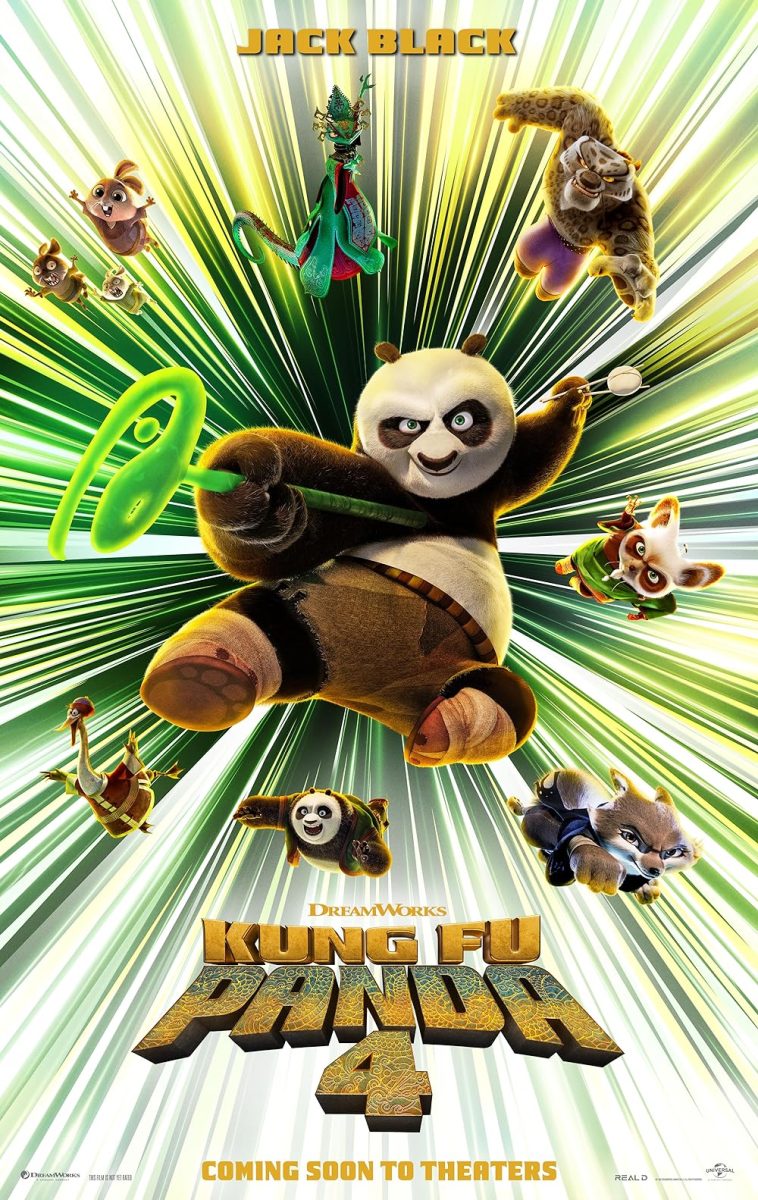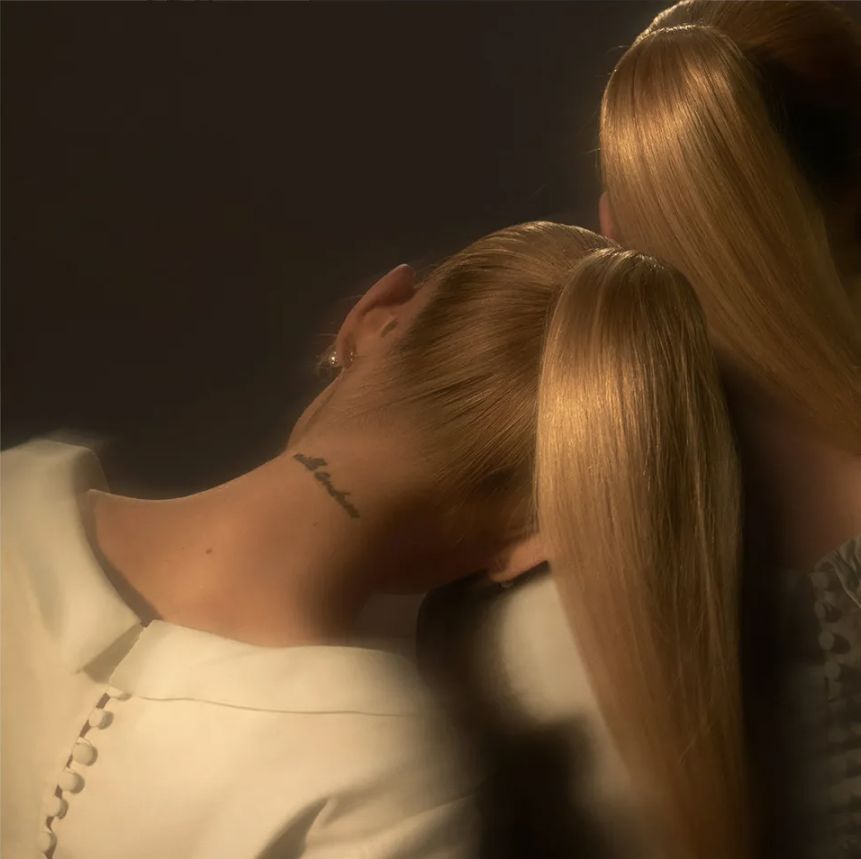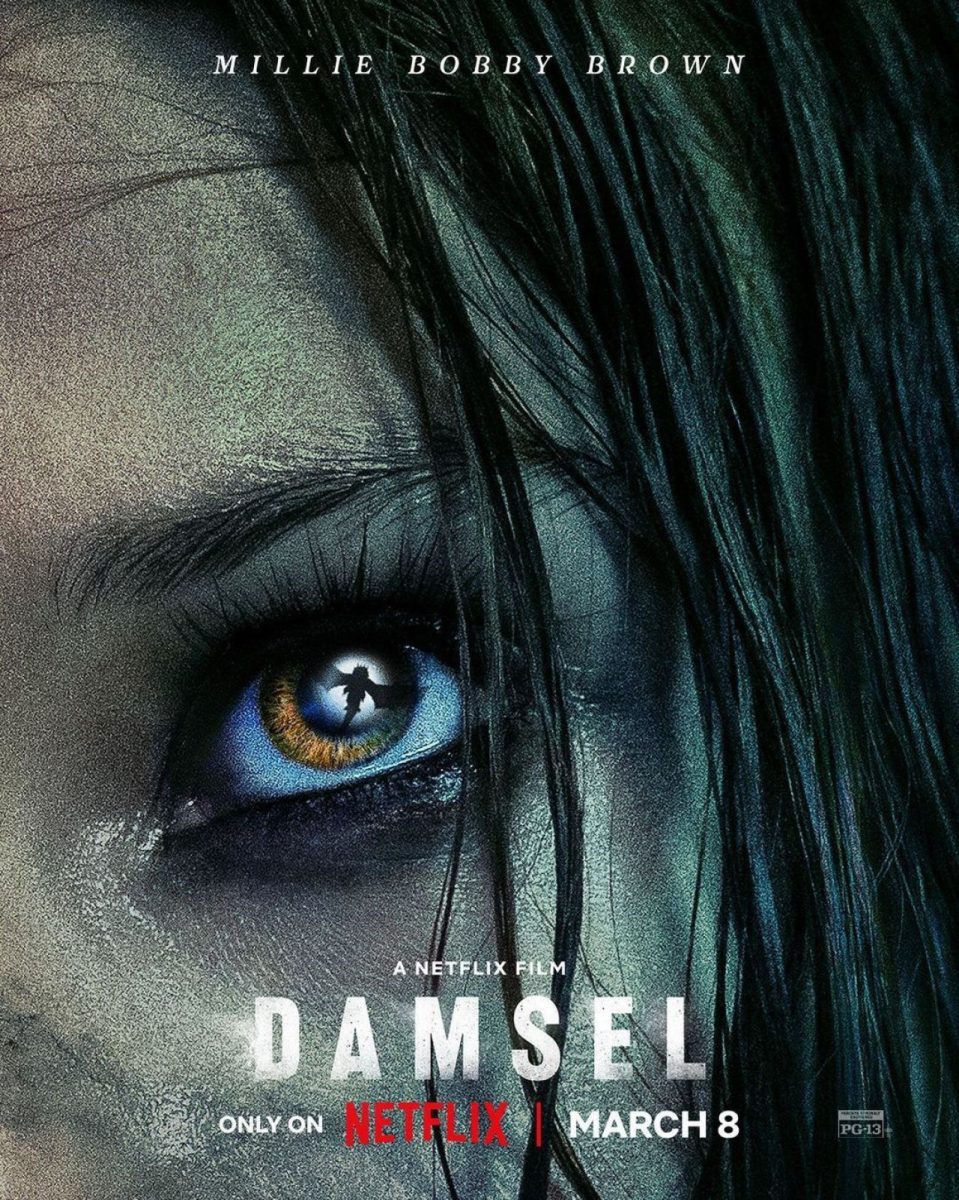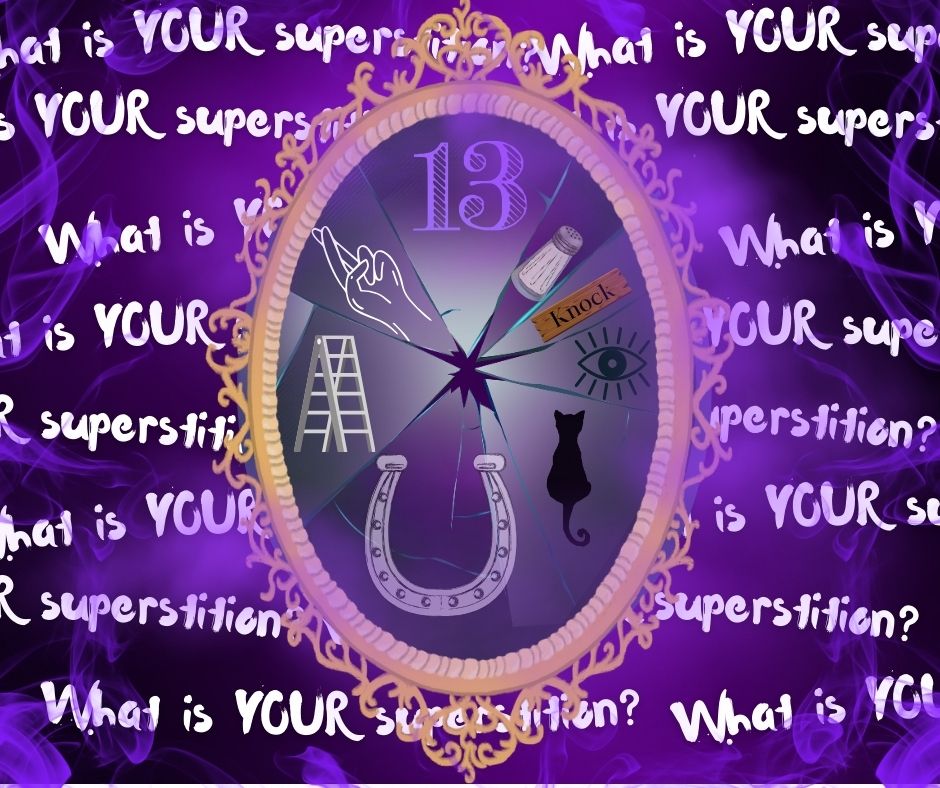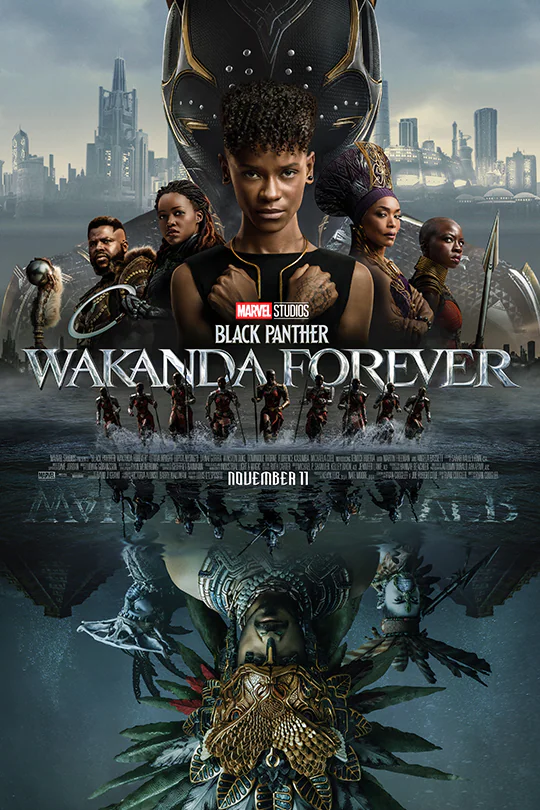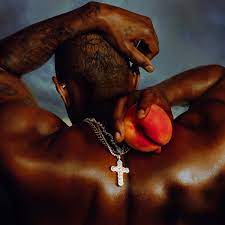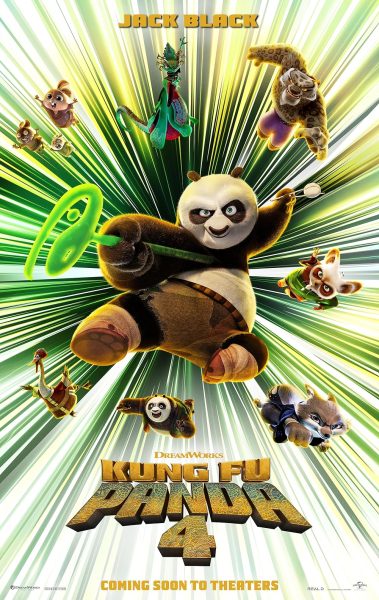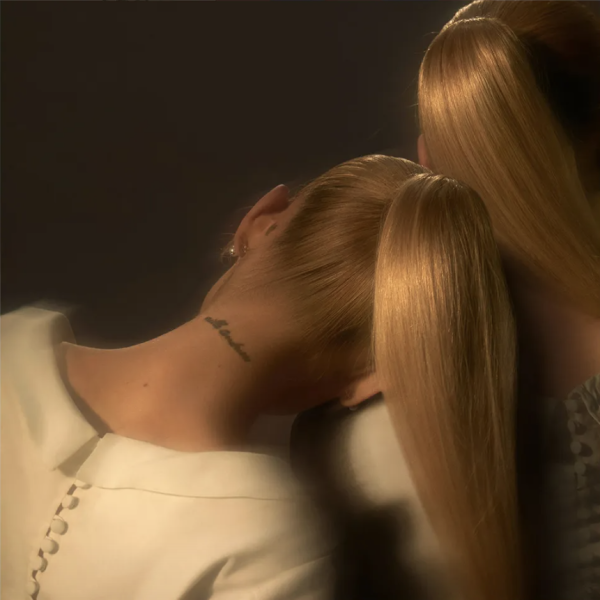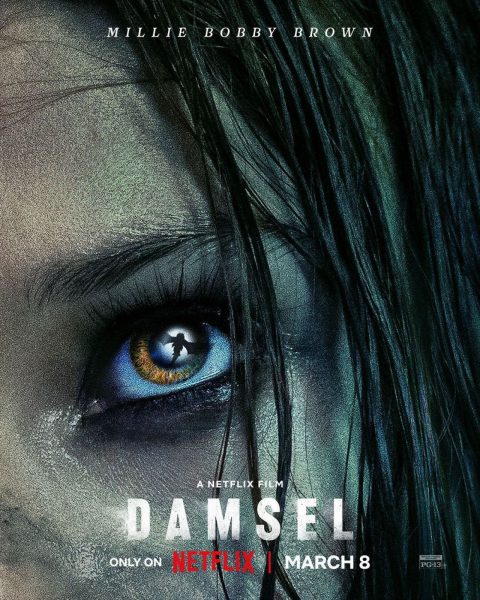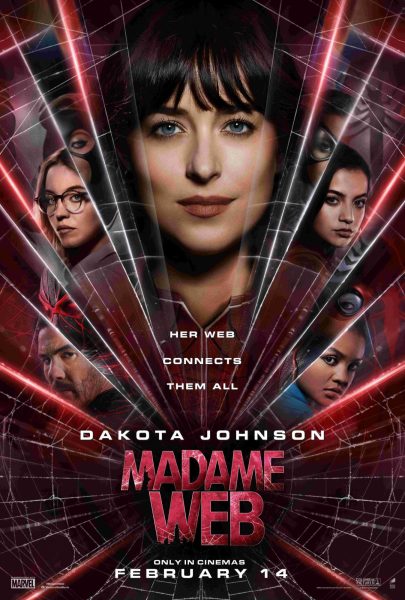“Black Panther: Wakanda Forever:” A Clash of Afrofuturism and Mayan Mythology
Incorporating elements of Afrofuturistic settings and mystical Mayan myths, “Black Panther: Wakanda Forever” carefully weaves a tale full of grief, loss, and hope for the tiny technological powerhouse of Wakanda.
Promotional poster courtesy of Marvel Studios
Instead of the traditional introduction showing all the Marvel characters with music in the background, the film began with a silent montage of pictures and videos of the late actor Chadwick Boseman, who played the lead role in the first “Black Panther” movie.
January 25, 2023
Contains spoilers.
“Wakanda Forever” is a phrase that has become a staple of media culture since the release of the first “Black Panther” movie in 2018. The movie took the world by storm when it captivated fans with a refreshing perspective into Wakanda, an obscure Afro-futuristic nation in the Marvel Cinematic Universe (MCU) that blends elements of traditional African culture with stunning technology. A continuation of its predecessor’s story, the plot premise of “Black Panther: Wakanda Forever” rests on the untimely death of King T’Challa, who was played by the late actor Chadwick Boseman in the first “Black Panther.” Many fans were heartbroken to hear that Boseman had passed away in 2020 after a long battle with colon cancer. Fans were also concerned about how the next “Black Panther” movie, which had already been announced at the time, would unfold. However, one rule was clear from the beginning: no CGI or special effects would be used to put Boseman in the movie.
Boseman had reportedly been hiding his cancer diagnosis from many, even those closest to him. The big controversy that was surrounding “Black Panther” was that of an incredible character that still had so much to explore about his story. Some wanted him to be recast, believing the legacy of Black Panther should be carried on by another, while others thought that would be Rayn Coogler, the director of both “Black Panther” movies, came up with a respectful compromise: the end credit scene showed T’Challa and Nakia’s son, also named T’Challa. He will ultimately be carrying on Boseman’s legacy.
“Black Panther: Wakanda Forever” shows the grief and devastation Boseman’s death caused to both the cast of the movie and fans around the world. Through heartfelt tributes to the actor, fans didn’t just mourn the character of King T’Challa; they also mourned the loss of a talented, inspirational actor who brought light to the world.
The movie starts off with the young tech-genius Shuri, portrayed by Letitia Wright, frantically trying to save her brother T’Challa from dying due to an unnamed illness. However, her efforts are unsuccessful, and Queen Ramonda (Angela Bassett), mother of T’Challa, informs a frantic Shuri that the King has succumbed to his illness, giving a tragic real-life parallel to Boseman’s death.
The movie then fast-forwards a year, showing a nation that has started to heal from the death of its king. Queen Ramonda, now the head of the nation, must figure out how to protect and guide her people while honoring T’Challa’s legacy of expanding Wakanda’s involvement in global politics by harnessing the power of vibranium, a special metal that can be used to create all sorts of advanced technologies which was thought to only be available in Wakanda. However, a new empire appears wielding weapons made of vibranium and technology that rivals Wakanda’s power. The Queen, alongside Princess Shuri, young MIT genius Riri Williams, and the people of Wakanda, must fight back to prevent themselves and the whole world from drowning in the watery empire of Talokan.
Soulful Songs
The astounding 26-song, 83-minute musical score of “Black Panther: Wakanda Forever” not only accents the most emotional and awe-inspiring scenes of the movie, but also manages to tell its own story.
Similar to the first movie, “Black Panther: Wakanda Forever” hones in on non-western genres of music to convey unique cultural perspectives. Movie director Ryan Coogler and composer Ludwig Göransson showed the audience everything, from the majestic depths of Talokan to the action-packed battles in the ocean, by including both traditional and modern musical elements to the scores.
According to Variety, Göransson conducted in-depth research and investigation into musical instruments, singers, and artists from Mexico City, Mexico and Lagos, Nigeria in order to carefully craft a musical masterpiece that successfully conveys the intricacies and nuances of the Mayan-inspired civilization of Talokan and the Afro-futuristic nation of Wakanda. “I think different parts of Black culture should be included, not just African Americans,” senior Ava Wardrett said. “ I loved that they are including [artists of different cultures],”
The impact of the movie’s musical score is heard during the movie’s first funeral scene. Unlike the solemn silence of funerals portrayed in Western-centered movies, “Black Panther: Wakanda Forever” fully embraces its African roots with a loud funeral procession full of music and stunning dance choreography. T’Challa’s funeral, the first big scene of the movie, uses the song “Nyana Wam,” which translates to “my son” from Xhosa, aptly named for the scene it’s used for. Strong percussive notes, delivered by talking-drum player Massamba Diop, intertwine with the mesmerizing vocals of Senegalese singer Baaba Maal to deliver the emotionally heart-wrenching scene of King T’Challa’s funeral.
This simple, yet impactful pattern of percussive instruments and powerful vocals is consistently present throughout the movie. The juxtaposition of Namor’s birth scene in the context of his family’s impending doom from the invading Spanish Conquistadors is a powerful part of understanding Namor’s character and motivations throughout the movie. “Árboles Bajo El Mar” serves as the missing puzzle piece to the scene. The song starts out with strong, resolute percussive beats alongside a soft hum from singer Vivir Quintana and rapper Mare Advertencia Lirika. The song gradually crescendos for over four minutes, before culminating in a powerful chant with mixed voices and sounds that highlight the pain, suffering, despair, and hope of Namor’s mother and ancestors as they traverse into the ocean, seeking to rebuild their home.
The movie also uses its impressive sound design to take the audience on a journey to previously unexplored places. “Con La Brisa” by Foudeqush and Ludwig Göranssonfirst introduces the audience to the majestic underwater empire of Talokan. The calm, pulsing instrumental underneath the dreamy vocals of Foudeqush leaves the audience feeling as if they’re drifting around Talokan, exploring the ocean right alongside Shuri and Namor.
The movie also included plenty of modern songs by prominent hip-hop, rap, and Latin artists. Pop singer Rihanna returned from a six-year hiatus to produce and sing music especially made for this movie. Rihanna released two singles: “Lift Me Up” and “Born Again.” Both songs are heartfelt elegies to Boseman, reminding everyone that in times of grief and loss, “we need light, we need love.”
Black Women Empowerment
Marvel continuing the legacy of two of their superheroes with Black women was a pivotal moment for the future of the franchise. Within the past few years, Marvel has been passing on the “superhero baton” to the next generation of heroes, such as Steve Rogers handing it to Sam Wilson or Carol Danvers handing it to Kamala Khan. Riri Williams, played by Dominique Thorne, is in possession of the baton that Tony Stark left for her. Based on the comics, after Stark fell into a coma, Williams created her suit by reverse engineering one of his prototypes. She named herself “Iron Heart,” a proud young Black woman who dedicates her life to saving others.
Despite the tragic death of King T’Challa, the women of Wakanda step into the light to help lead the kingdom. With powerful Dora Milaje warriors by her side, Shuri is able to mourn her family while becoming the protector of the next generation. Throughout the movie, M’baku, portrayed by Winston Duke, wants to take over the throne after Queen Ramonda passed away. However, he would like to challenge a person before claiming the throne. As Shuri enters the “safe camp,” she challenges M’Baku to an arm wrestle and wins, allowing her to take her throne as the true leader of Wakanda. By having women play a major role in the future of the franchise, Marvel gives the younger generation of fans strong role models to look up to. “[It feels really good to be represented] because of the amount of quality and time that went into the movie to show good Black stories and good characters,” Wardrett said.
Colonialism and Conflict With The Outside World
After the first “Black Panther” made a worldwide statement on the lasting effects of colonialism, “Black Panther: Wakanda Forever” takes the theme to the next level, with Wakanda exposed to the outside world.
When Namor’s family faced the threat of incoming Spanish Conquistadors, they were forced to take a substance that mimicked the effects of the Heart-Shaped Herb, a substance that alters the physiology of a person to grant them increased strength and power. This gave them the power to breathe underwater, but prevented them from breathing air on land. With the help of the Herb, they fled into the ocean, seeking to rebuild their empire. However, when Namor’s mother died, and the family resurfaced in order to properly bury her, they walked into a completely different world that was once their home. Haciendas, or large plantations, sprawled the land, with ruthless Conquistadors ruling without mercy.
As Namor’s family watched the brutality and desecration that had taken over their homeland, the audience can see immediate parallels with the real-life colonization of nations in Latin America during the 16th century. When Spanish Conquistadors arrived in Latin America, they brought disease and destruction that ravaged the indigenous nations at the time. The movie highlights the indigenous perspective of this conflict, and showed how quickly their culture and livelihood fell at the hands of conquerors from a faraway land. By highlighting indigenous perspectives, the movie portrays the raw, authentic history of native people in the time period, and shines a spotlight on the lasting effects of colonization on Latin American nations.
Shuri and Queen Ramonda: Grief, Loss, and a Conflict Between Spirituality and Atheism
Grief and loss have been ever-present in recent MCU movies, mercilessly looming over characters as they try to navigate a broken, tragic, and ever-changing world. However, with real-life loss, “Black Panther: Wakanda Forever” holds a special place for life after loss.
Throughout the movie, Shuri and her mother, Queen Ramonda, frequently clash with each other about their perspective of spirituality, death, and the afterlife. The Queen, although stricken with grief at the death of her son, achieves a sense of peace after feeling that T’Challa has made his way to the Ancestral Plane and is resting with their ancestors. She takes a spiritual approach to deal with her sorrow, telling Shuri that she knows he lives on in the afterlife because she can feel it in the swift winds, swaying trees, and soft grass if she closes her eyes. Shuri, who grounds a lot of her beliefs in science and physical aspects of the world, is very critical of this perspective. She bluntly tells her mother that all these feelings are figments of her imagination and that T’Challa is dead, not living in the afterlife. The Queen then performs a spiritual ritual that involves burning her white funeral clothes, while Shuri looks on in disbelief.
Although fans went into the movie with knowledge of the death of King T’Challa, many were shocked seeing the loss of another significant character: Queen Ramonda. Everything leading up to her death happened in a blur; one moment, Namor was giving Shuri a tour of his kingdom along with gifting her with a bracelet. The next moment, he attacked Wakanda and murdered Queen Ramonda, telling Shuri “you’re queen now.”
After her mother’s funeral, she wanted to make her brother and mother proud as she took the action needed. To make her late family proud, she became the Black Panther, vowing to protect Wakanda from the watery invaders no matter the cost. Later, after the death of the Queen, Shuri opens her perspective towards spirituality and carries on her mother’s tradition by burning her funeral clothes in a fire. As she watches it burn, she closes her eyes and feels a sense of peace wash over her, akin to the experience her mother talked about before.
“Black Panther: Wakanda Forever” is available to watch in theaters.




![Standing center stage, senior Ananya Akula conducts the Phoenix Chorale. “[Conducting and teaching] is really fun,” Akula said. “Music education is what I want to do.” On the day of the choir assessment, Akula found out that she received the President’s Music Scholarship – a full ride to the University of Miami Frost School of Music.](https://theblazerrhs.com/wp-content/uploads/2024/04/ananya-1200x800.jpg)
![Senior Fatima Qaderi grew into the person she wanted to become when she was younger and continues to work towards growing more confident in using her voice when it matters. “I didnt get treated the way I wanted to be treated, and I realized that it wasnt just them treating me the wrong way, it was me treating me the wrong way,” Qaderi said. “I forced them to like to look at me in a way where Im someone who needs to be respected; they cant just disregard me, they cant just look over me because I have a different opinion, because Im a woman, because Im Afghan, because Im Muslim, or whatever. It just took going through different experiences to figure out how [I wanted to] be heard.” Photo courtesy of Fatima Qaderi.](https://theblazerrhs.com/wp-content/uploads/2024/04/IMG_3870.jpeg)












![With the energy and effort the Bolts were bringing to the game, the Phoenix had to step up and match them to make it through their first game of the season. Many of the girls on the team, including freshman Nazly Rostom, have been playing soccer since their childhood and have grown a love for the sport as a result. “It was fun to see how we actually played in a [real] game,” Rostom said. “Even though the outcome was not what we were hoping for, I’m still happy we got to play together.”](https://theblazerrhs.com/wp-content/uploads/2024/04/DSC_0154-1200x800.jpg)


![Held up by a group of cheerleaders, flyer sophomore Leyu Yonas poses as part of a stunt, also supported by flyer junior Shayne Mitchell behind her. (Left) Prior to the pink out football game on Oct. 13, the athletes practiced in the aux gym from 5 p.m. to 6:30 p.m. (Right) On Oct. 19, the cheerleaders competed in their District Championships at Woodgrove High School. “We definitely put all our effort on the mat [at Districts], and it showed,” Mitchell said. Left: Photo by Nadia Shirr. Right: Photo by Steve Prakope via Victor O’Neill Studios.](https://theblazerrhs.com/wp-content/uploads/2023/11/feature-image-1200x823.png)
![Sophomore Xavier Smith (6), the Phoenix quarterback, runs the ball as his teammates help hold up the defense. “My [offensive] line collapses, so I just [have to run], and its a good way to get first downs because [Tuscarora’s] defense was really good,” Smith said.](https://theblazerrhs.com/wp-content/uploads/2023/11/IMG_5383-1200x897.jpg)



![As the referee throws the ball up for the tip-off, freshman Simone Diby leaps towards the ball to get it in Phoenix possession. Diby is a new member of the Phoenix girls basketball team, and despite it being a change, she finds it enjoyable. “It’s definitely a different experience if you’ve never played on a team, [but] I think it’s still fun.”](https://theblazerrhs.com/wp-content/uploads/2024/03/DSC_0057-1200x662.jpg)



